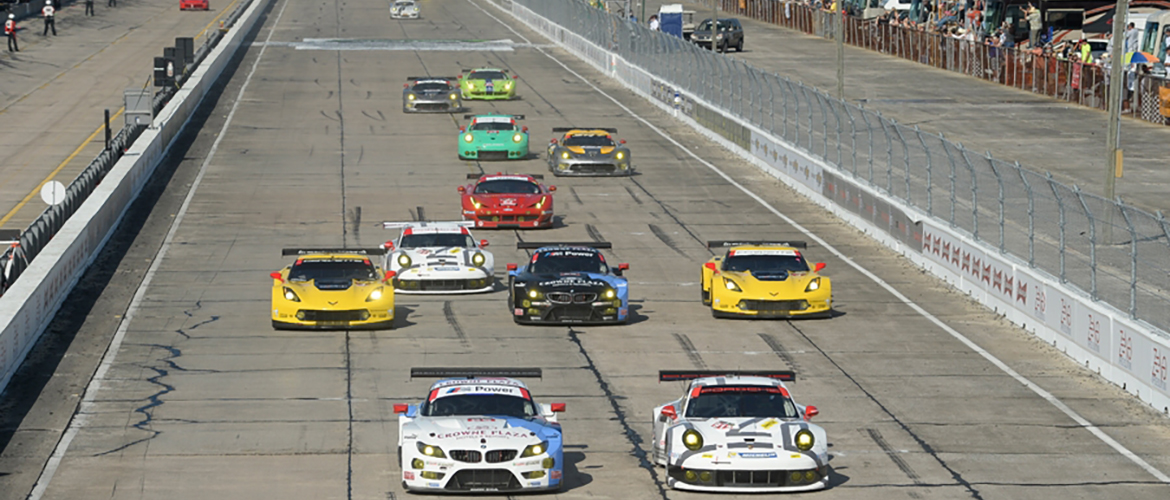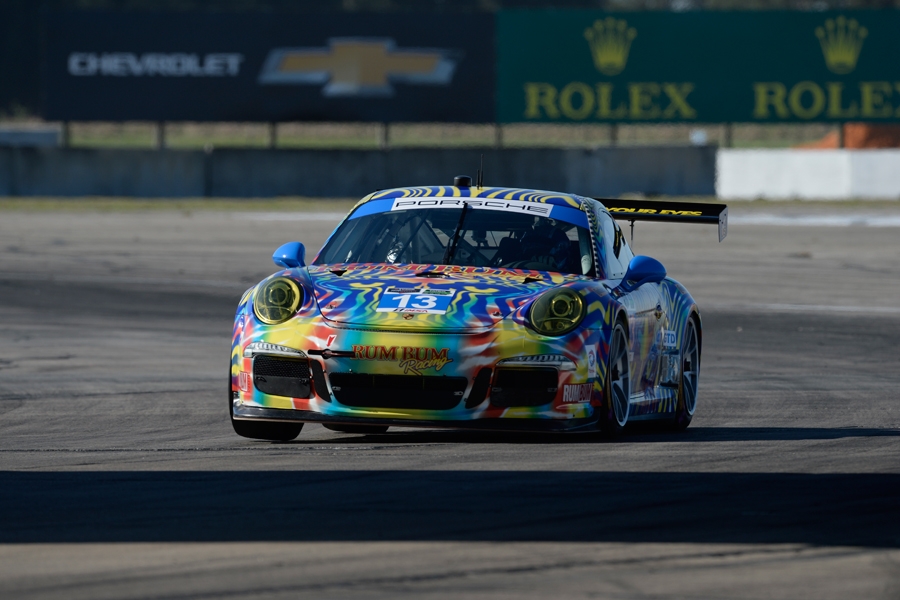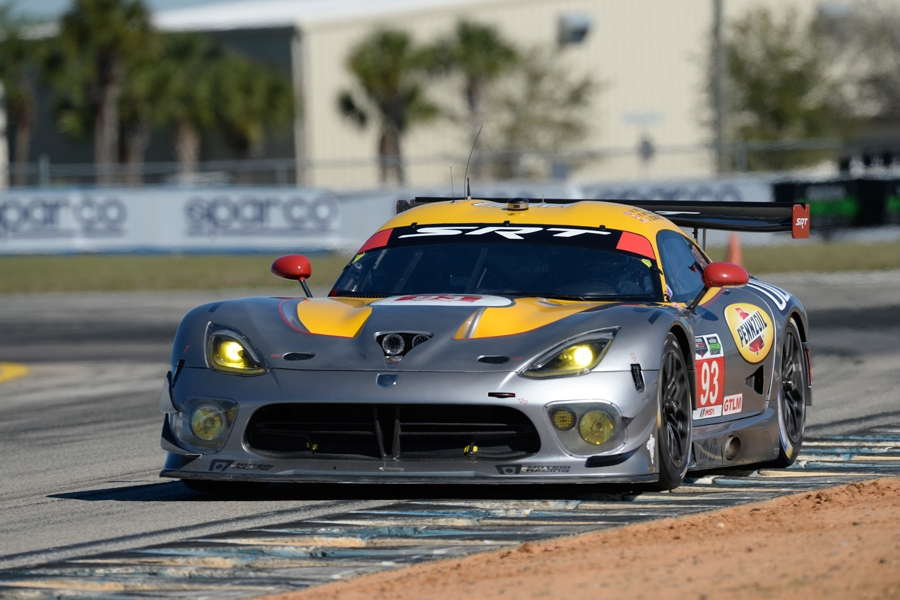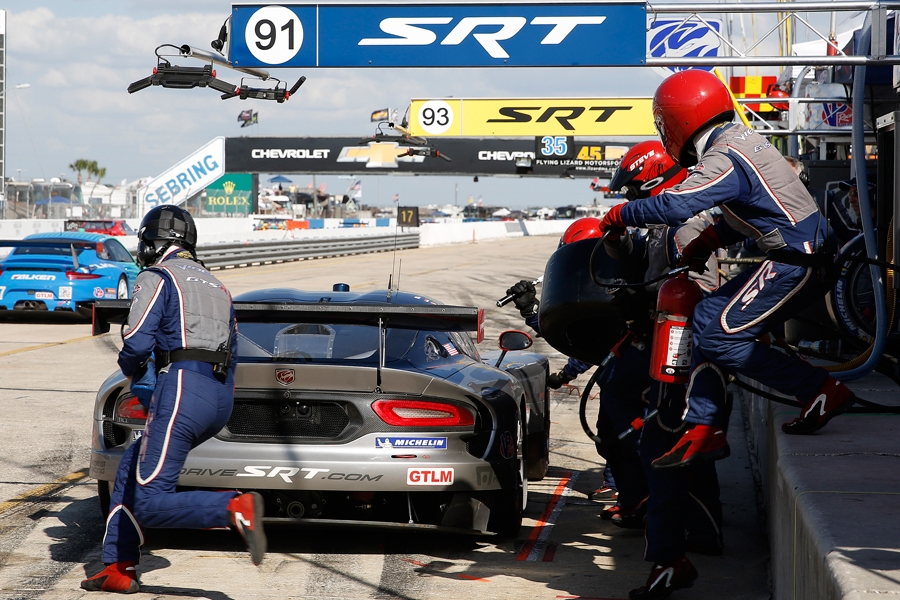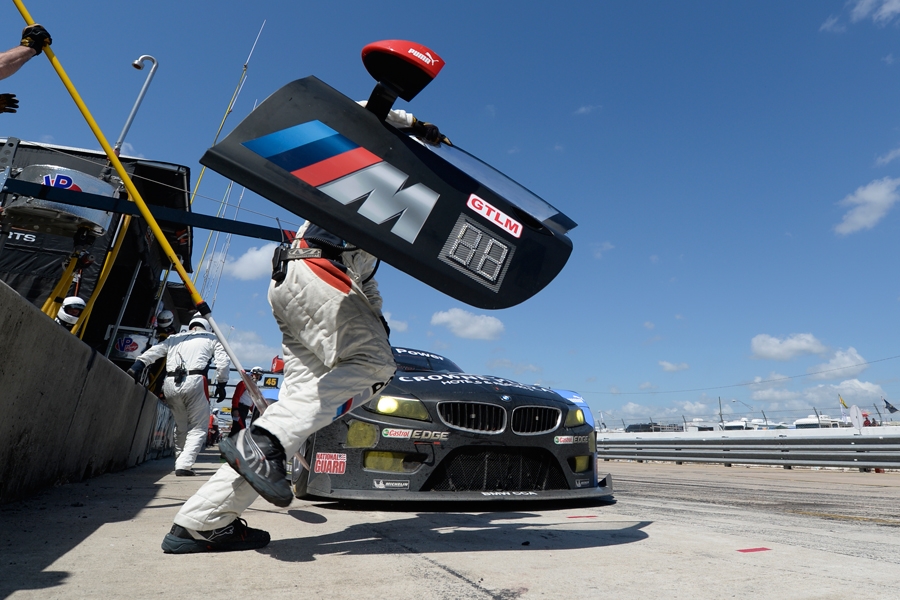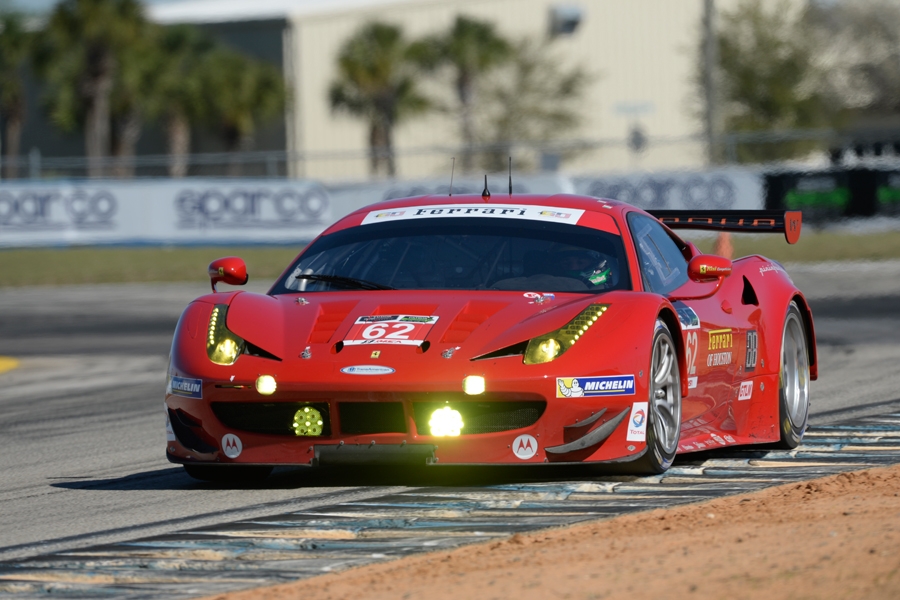Tudor United SportsCar Championship Rocks Sebring
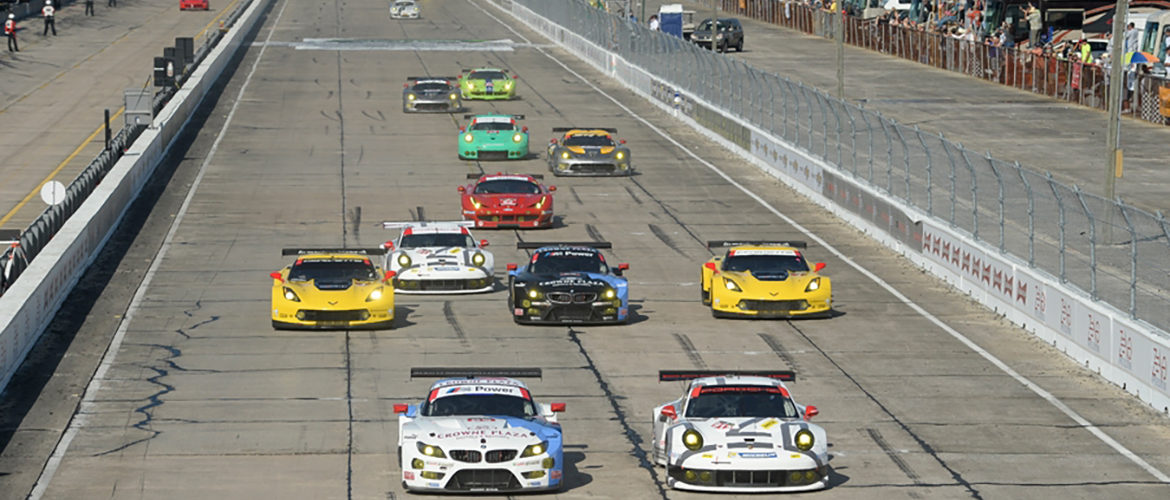
The men and machines of the Tudor United SportsCar Championship returned to action on March 15 at the Mobil 1 Twelve hours of Sebring. The second event of the twelve-race series featured scintillating nose-to-tail racing in each of the four vehicle classes.
Fans of premier supercar racing were treated to a sprawling automotive nirvana of luxury lifestyle hospitality zones, trackside campsites, and a non-stop program of motorsports action.
The outcomes in each class were determined by a combination of tactics, race craft, outright speed, mechanical misfortune, and more than a little controversy.
Sebring’s legendary 12-hour event entered its sixty-second edition with the largest and most competitive field in over a decade. Sixty-four racecars in the Prototype, Prototype Challenge, GTLM and GTD classes took the start as former 12-hour winner and British racing legend Vic Elford waved the green flag.
Following a six-week recovery from January’s series opening Rolex 24 Hours of Daytona, the Tudor series competitors were ready to resume world-class endurance racing under the Florida sun.
The headlining Prototype and Prototype Challenge classes were won by a combined total of less than eight seconds.
In Prototype, the No. 01 Riley-Ford of Indy 500 kingpin Chip Ganassi claimed class victory and overall honors after running behind quicker coupes and roadsters for most of the day.
A late yellow-flag caution period created a pits top shuffle that saw the No. 01 car emerge in the class lead with twelve minutes to race. Ganassi drivers Marino Franchitti, Memo Rojas, and American Scott Pruitt leveraged reliability, fuel efficiency, and old-fashioned tactical nous to prove that the fastest car doesn’t always win the race.
In the Prototype Challenge class, Rolex 24 winners CORE Autosport recapitulated their endurance race dominance by taking a second consecutive class victory with the No. 54 Oreca FLM09. CORE’s Corvette-powered French roadster proved to be the class of four identical cars that qualified within less than a second of each other.
Although No. 54 qualified off of the class podium, the car and its all-American driver lineup of Colin Braun, John Bennett, and James Gue proved to be the finest of its field. CORE’s final overall placing of tenth – beating many of the faster Prototype class racers – was a testament to the team’s quality.
While the prototypes thrilled with their outright speed, the most compelling storylines of the 62nd 12 Hours of Sebring may have come from the production-based supercars of the GTLM and GTD classes. As owners and partisans of the various supercar manufacturers cheered from trackside perches, the Ferrari 458s, Porsche 911s, Corvette Stingrays, and SRT Vipers spent virtually the entire 12 hour race glued to each other’s bumpers in a hammer-and-tongs showdown for the ages.
In GTLM, the battle lines were drawn between factory-backed teams of Vipers, Corvettes, BMWs, and Porsches. Porsche in particular arrived with a mark on its back. As the GTLM winners of the Rolex 24 and the class pole-sitter at Sebring (via 911 RSR No. 912), Porsche had given its rivals abundant reason to set their sights on the rear-engine racers from Stuttgart.
Despite taking the GTLM class pole, Porsche found all of its cars somewhat lacking in pace compared to the big-block American Vipers and Corvettes. Moreover, the Z4 coupes of BMW’s factory-supported Rahal Letterman Racing team were able to circulate within seconds of the class leaders for the duration of the 12-hour shootout.
In a game of inches, Porsche had the good fortune to gain a free foot. With less than an hour remaining, the No. 93 SRT Viper had stormed to the class lead and was pulling away from the lead 911, No. 912. While both cars required one more pit stop to complete the 12 hours, this was considered a non-factor in the race outcome since both cars would lose and gain comparable time as they alternately entered and exited the pits.
But misfortune struck the leading Viper when it pitted under green flag conditions immediately prior to a lengthy yellow-flag caution period. The second-running No. 912 Porsche of Jorg Bergmeister, Michael Christensen, and American Patrick Long was able to jump ahead due to the advantage of not requiring a pit stop; during the yellow flag caution, the field limited its fuel use behind the slow-moving safety-car.
When race action resumed 12 minutes from the finish, even the Viper’s one second-per-lap speed advantage was insufficient to close the gap to the fortune-favored Porsche. The No. 912 Porsche 911 RSR took the checkered flag just over four seconds ahead of the hard-charging No. 93 SRT Viper GTS.
After the race, it emerged that the No. 912 had dodged an 80-second time penalty when another Porsche 911 was forced to serve a stop-and-go reprimand for on-track contact caused by No. 912. The case of mistaken identity allowed No. 912 to win its class despite the fact that the No. 93 Viper would have won handily had the rules been adjudicated correctly. No change was made to the race outcome, but the controversial decision cast a pall over Porsche’s GTLM triumph.
In the GTD class, which combines amateur and professional drivers in production-based supercars, Porsche scored its second victory of the day only seconds after the win by No. 912. The No. 44 Porsche 911 GT America of Marco Seefried and Americans Andy Lally and John Potter held-off a furious charge by the No. 555 AIM Motorsport Ferrari 458 Italia GT3.
The GTD class witnessed the incredible late-race spectacle of no fewer than six Audis, Porsches, and Ferraris running within sight of each other following 12 hours of competition. Despite the dramatic design disparities between the machines of ten, six, and eight cylinders, respectively, the racing was nose-to-tail, and the lead six finished within 16 seconds of each other.
GTD class carnage also served as a reminder of the merciless character for which Sebring’s track surface has become famous. The pounding of the old airfield’s cement slabs caused the No. 33 Viper Exchange SRT Viper to catch fire and burn to the ground. Repeated attempts to extinguish the flames failed. The incident caused the first of nearly six hours of caution periods attributed to mechanical failures and episodes of driver fatigue.
The usual Sebring trackside spectacles were present in force as banner weather and a stellar field combined to swell attendance at the circuit’s famously raucous infield campgrounds.
Race fans and luxury lifestyle devotees packed the old airstrip’s hospitality zones as unprecedented corporate sponsorship created a small village of VIP concessions on both sides of the start-finish straight. Participating manufacturers including BMW, Porsche, Chevrolet Corvette, Chrysler SRT, Ferrari, Lamborghini, and Audi rolled out the champagne, foie gras, and branded memorabilia for owners in attendance.
Car corrals devoted to all marques were teeming with exotics and luxury lifestyle amenities provided by the respective motor manufacturers. Friendly rivalries between owners of the supercars mirrored the cut-and-thrust of their racing counterparts on the track; good-natured barbs were traded as the on-track champions swapped positions throughout race day.
The Tudor United SportsCar series resumes on the weekend of April 11-12 in Long Beach, California. A technical and challenging two-mile street circuit will host the world’s top supercars, drivers, and an accompanying luxury lifestyle expo during the Tequila Patrón Sports Car Showcase At Long Beach.

